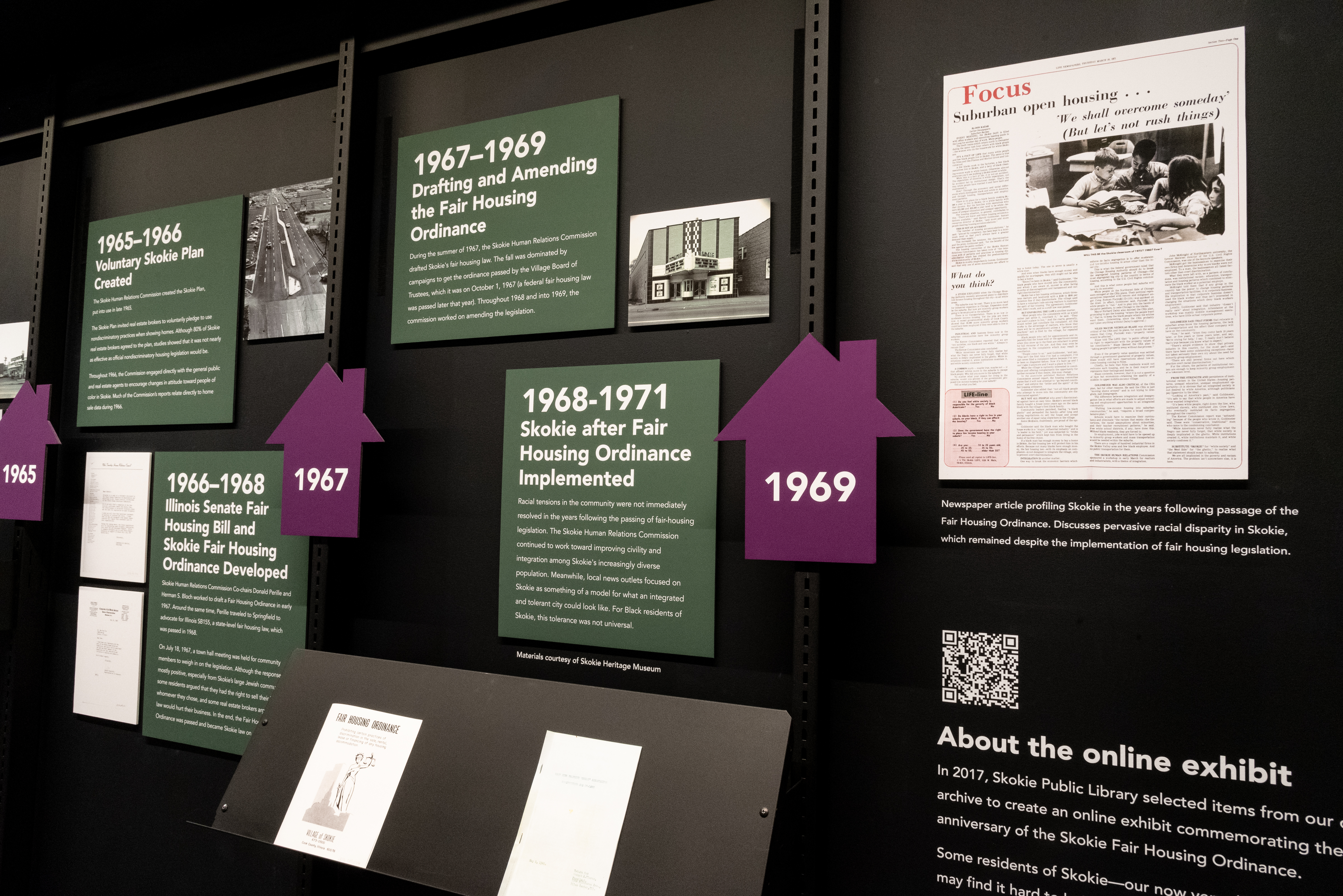The Beginnings of Fair Housing in Skokie
January 31, 2025

Like many suburban communities, Skokie struggled with segregation and discrimination during the 1960s. No laws in Illinois explicitly prohibited discrimination and segregation, leaving Skokie’s predominantly white population to decide person by person whether Black people were welcome in their neighborhoods and community organizations.
First Black Family Buys Home in Skokie
On January 31, 1961, David and Lois Jones moved into a home in northeastern Skokie. They were the first Black family to purchase property in the village. Local sentiment toward the Joneses was mixed--their house was vandalized that April. It seemed possible that a wave of “panic selling” would happen, in which many white residents would attempt to sell their homes simultaneously, causing property values to plummet and furthering segregation. Discrimination had long existed in Skokie, and the need to directly address interracial relations became clear.
Human Relations Commission
As a result, the Village of Skokie established the Skokie Human Relations Commission "to encourage understanding and respect between residents of Skokie of various racial, religious, and nationality backgrounds and to safeguard the rights of all citizens as defined by our Ordinances, Statutes, and Constitution." The organization was modeled after the Niles Township Human Relations Council, which was formed to serve a similar purpose of easing racial tensions. Chicago and several suburbs were also considering fair housing legislation to promote integration and growth.
Voluntary Nondiscrimination Plan
The Skokie Human Relations Commission created the Skokie Plan, which went into effect in 1965. The Skokie Plan invited real estate brokers to pledge to use nondiscriminatory practices when showing homes. Although 80% of Skokie real estate brokers agreed to the plan, studies showed that it was not nearly as effective as official nondiscriminatory housing legislation would be. Throughout 1966, the Commission engaged directly with the general public and real estate agents to encourage changes in attitude toward people of color in Skokie.
State Law and Local Ordinance
Skokie Human Relations Commission cochairs Donald Perille and Herman S. Bloch worked to draft a Fair Housing Ordinance in early 1967. Around the same time, Donald Perille traveled to Springfield to advocate for Illinois SB155, a state-level fair housing law, which was passed in 1968.
On July 18, 1967, a town hall meeting was held for community members to weigh in on the legislation. Although the response was mostly positive, especially from Skokie’s large Jewish community, some residents argued that they had the right to sell their homes to whomever they chose, and some real estate brokers argued that the law would hurt their business. In the end, the Fair Housing Ordinance was passed and became Skokie law on January 1, 1968.
After Ordinance Implemented
Racial tensions in the community were not immediately resolved in the years following the passing of fair housing legislation. The Skokie Human Relations Commission continued to work toward improving civility and integration among Skokie's increasingly diverse population. Meanwhile, local news outlets focused on Skokie as a model for what an integrated and tolerant city could look like, although this tolerance was not universal, as detailed in Gwendoline Fortune’s memoir.
Today, more than 90 languages are spoken in homes in Skokie, and much of Skokie's diverse and multicultural heritage can be attributed to the village's proactive approach toward integration.
Browse our online exhibit to learn more about fair housing in Skokie. An additional blog post highlights a fair housing event held last year.